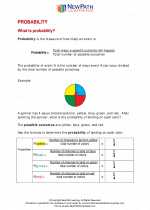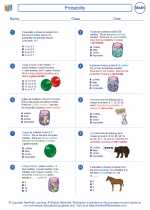Function Patterns
In mathematics, a function is a rule that assigns each input exactly one output. Function patterns refer to the relationship between the input and output values of a function, and how these values change according to specific rules or patterns.
Understanding Function Patterns
To understand function patterns, it's important to first grasp the concept of a function. A function is typically represented by a rule or equation, and it takes an input (usually denoted as 'x') and produces an output (usually denoted as 'f(x)'). The relationship between the input and output values can be represented in various ways, such as through tables, graphs, or algebraic expressions.
Function patterns involve identifying and describing the relationship between the input and output values. This may include recognizing numerical patterns, understanding how the input values affect the output values, and predicting the output for a given input based on the pattern or rule.
Studying Function Patterns
When studying function patterns, it's important to focus on the following key aspects:
- Identifying Patterns: Look for any numerical or visual patterns in the input-output relationship. This may involve creating a table of values, plotting points on a graph, or analyzing the behavior of the function for different input values.
- Describing Rules: Try to express the pattern or relationship between the input and output values using an algebraic expression or equation. This may involve identifying the arithmetic operations or mathematical functions that govern the pattern.
- Predicting Outputs: Use the identified pattern or rule to predict the output for a given input, or to extend the pattern to additional input values.
- Applying Patterns: Apply the understanding of function patterns to solve problems, analyze real-world scenarios, and make predictions based on the given rules or patterns.
Example of Function Patterns
Let's consider a simple example of a function pattern:
Given the function f(x) = 2x + 3, identify the pattern and predict the output for the input values of 1, 2, and 3.
We can start by creating a table of values to observe the pattern:
| x | f(x) = 2x + 3 |
|---|---|
| 1 | 5 |
| 2 | 7 |
| 3 | 9 |
From the table, we can observe the pattern that the output (f(x)) increases by 2 for each increase in the input (x). We can use this pattern to predict the output for other input values.
Using the pattern, we can predict that for x = 4, the output will be f(4) = 2(4) + 3 = 11.
This example demonstrates the process of identifying, describing, and applying function patterns to understand the relationship between the input and output values of a function.
.◂Math Worksheets and Study Guides Fifth Grade. Probability

 Worksheet/Answer key
Worksheet/Answer key
 Worksheet/Answer key
Worksheet/Answer key
 Worksheet/Answer key
Worksheet/Answer key
 Worksheet/Answer key
Worksheet/Answer key
